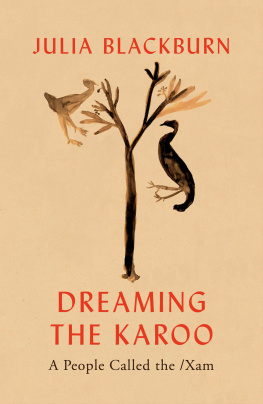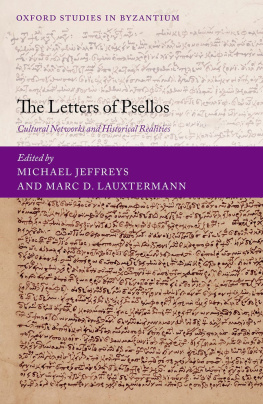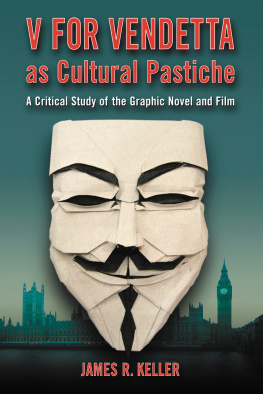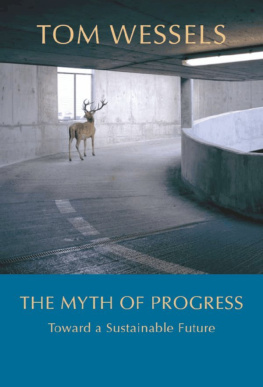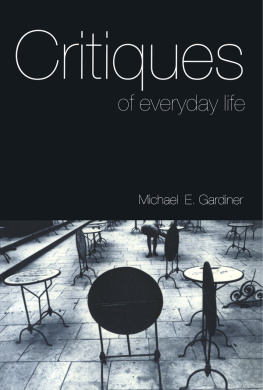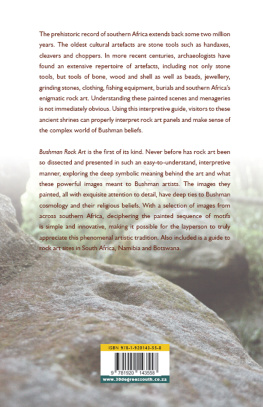Much of the material in this book has appeared in a different form and in various journals as listed below:
Antjie Krog, Stephen Watson and the Metaphysics of Presence, Current Writing , 118 (3), 2007: 2448 (www.ukzn.ac.za/currentwriting);
The Discursive Character of the |Xam Texts: A Consideration of the |Xam Story of the Girl of the Early Race Who Made Stars, Folklore , 119 (1), 2007: 307324 (www.tandf.co.uk/journals/titles/0015587X.asp);
Myth of Origin or Play of Difference: A Discussion of Two Versions of the |Xam Story of the Moon and the Hare, Current Writing , 20 (1), 2008: 5468 (www.ukzn.ac.za/currentwriting);
New Directions in |Xam Studies: Some of the Implications of Andrew Banks Bushmen in a Victorian World: the Remarkable Story of the Bleek-Lloyd Collection of Bushman Folklore, Critical Arts: A Journal of North-South Cultural Studies , 22 (1), 2008: 6982 (www.tandf.co.uk/journals/rcrc);
The Story in which the Children are Sent to Throw the Sleeping Sun into the Sky: An Exploration of Power, Identity and Difference in a |Xam Narrative, Journal of Southern African Studies. 34 (3), 2008: 479494 (www.tandf.co.uk/journals/carfax/03057070.html);
Text or Presence: On Rereading the |Xam and the Interpretation of their Narratives, Journal of Literary Studies , 24 (3), 2008: 2039 (www.tandf.co.uk/journals/RJLS);
The |Xam Narratives: Whose Myth of Origin? African Studies , 67 (3), 2008: 339364 (www.tandf.co.uk/journals/titles/00020184.asp);
Religion and the Interpretation of the |Xam Narratives. Current Writing , 20 (2), 2008: 4466 (www.ukzn.ac.za/currentwriting);
The Universal and the Local: the Trickster and the |Xam Narratives, English in Africa , 35 (2), 2008: 733 (www.journals.co.za/ej/ejour_iseaeng.html);
Foraging, Talking and Tricksters: a Critical Appraisal of Mathias Guenthers Contribution to Reading the |Xam Narratives, Journal of Folklore Research , 45 (3), 2008: 299328 (www.indiana.edu/~jofr);
Reading the Hartebeest: a Critical Appraisal of Roger Hewitts Interpretation of the |Xam Narratives, Research in African Literatures , 40 (2), 2009: 82108 (http://inscribe.iupress.org/loi/ral).
Bushman Letters
Interpreting |Xam Narrative
Michael Wessels
Published in South Africa by
Wits University Press
1 Jan Smuts Avenue
Johannesburg
2001
http://witspress.wits.ac.za
Copyright Michael Wessels 2010
First published 2010
ISBN 978-1-86814-506-5 (print)
ISBN 978-1-86814-622-2 (digital)
All rights reserved. No part of this publication may be reproduced, stored in a retrieval system, or transmitted in any form or by any means, electronic, mechanical, photocopying, recording or otherwise, without the written permission of the publisher, except in accordance with the provisions of the Copyright Act, Act 98 of 1978.
The original cover images are San (the dancing Kudu) and Khoekhoen (the abstract figures) art at Twyfelfontein, Namibia accessed on http://commons.wikimedia.org/wiki/File:San_-_Khoekhoen_rock_art_-_Namibia.jpg#file. The cover art for Bushman Letters has been reworked by Arlene Mahler-Raviv.
Edited by Alex Potter
Indexed by Elaine Williams
Cover design and layout by Hothouse South Africa
Printed and bound by Ultra Litho (Pty) Ltd.
The Bushmens letters are in their bodies. They (the letters) speak, they move, they make their (the Bushmens) bodies move. They (the Bushmen) order the others to be silent .... A dream speaks falsely, it is (a thing) which deceives.
||Kabbo ()
Contents
FOREWORD
It is difficult to compose a preface for a brilliant book. In one sense, there is nothing more to say, as what the book contains reflects its own perfection. Yet the very essence of Michael Wessels extraordinary and rich study of |Xam narrative is that nothing is ever closed and final. The interpretive act is never complete; indeed, the book is about multiplicities. |Xam narrative exists, Wessels tells us, as something in process, something unfinished, never to be cast in stone. His chapters in the section, Reading the Narrative constantly force us away from a single and singular reading. Instead, he emphasises the rich and intricate texture of the narratives and shows us the ways in which they invite multiple interpretation and elicit multiple meanings. He invites us to concede difference and to understand that there is no easily marked out common Khoisan tradition. His approach thus takes us away from what he rightly sees as the generalising tendency in the field that holds that all Bushmen (or even all Khoisan) belong to a single culture. Instead, the book focuses our minds on particularities the specificities of the |Xam language, out of which his study comes, within the wider sweep of Khoisan languages. He reminds us too of the particular delineations of the individual speakers who passed on their often rich and detailed knowledge and creativities to their interlocutors, Wilhelm Bleek and Lucy Lloyd, at their home in Mowbray in Cape Town. Through his meticulous research in the Bleek and Lloyd archives and his use of Andrew Banks work on the Bleek and Lloyd families and the |Xam informants themselves, Wessels presents for us the quite substantial differences between Bleek and Lloyd in their working habits and views of their informants culture. Lucy Lloyd emerges as a woman increasingly interested in the specificity of local cultures and the particularities of |Xam culture, thus moving away from her brother-in-law Wilhelm Bleeks belief in the dominant theories of social evolution and racial differentiation of his era.
Alongside the close gaze that Wessels asks us to engage in, we are taken into a new critical world. Bushman Letters sweeps away the stockades of an old critical habitus that has largely fenced off the study of what was/is often regarded as traditional literature from texts seen as modern. This approach has also assumed that oral literature should be regarded as being linked to the past and not fully part of contemporary literary discourse. Wessels, however, wants an understanding of the signifying practices of the |Xam discursive tradition itself. He argues most convincingly that earlier hermeneutic practices have been most interested in overarching patterns and structures, and not in the essence of the thing itself. He brings to bear on the productive world of the |Xam narratives and their mediators the work of key contemporary thinkers such as Spivak, Foucault and Bourdieu. He sees the texts themselves as sites of creativity and contestation, which critics and readers have to keep in mind as they engage with the narratives and, indeed, with similar cultural forms and traditions across the region.
Like all fine scholars, Wessels does not see his own work in isolation, but situates it in a wider critical tradition, in his case one that has grown up around the |Xam archive and the hermeneutic principles that inform that tradition. He draws illuminatingly on the classic seminal work of scholars such as Hewitt and Guenther, and interrogates their positions. Finely, carefully and generously, he critiques these interpretations through offering alternative modes of reading, thus providing a kind of metacriticism of what has gone before. He asks us to assume that there may perhaps not have been a social function to the narratives. Neither, he argues, can we assume that the narratives fit into patterns of universal storytelling this particularly for the stories around the trickster figure, |Kaggen, and his family. And neither, he assures us, can we assume that the narratives mesh in some way with the archives of rock painting or sit comfortably with the narratives of other San people. Examine their textuality, he tells us, and do not always see them as the representation of something else particularly as a representation of lost origins. In connection with the idea of the myth of origins, he engages in particular with the deconstructionist ideas of Derrida, who is one of the main influences on his work. Observe also the narratives intertextuality within the broader context of |Xam discourse, he urges.



